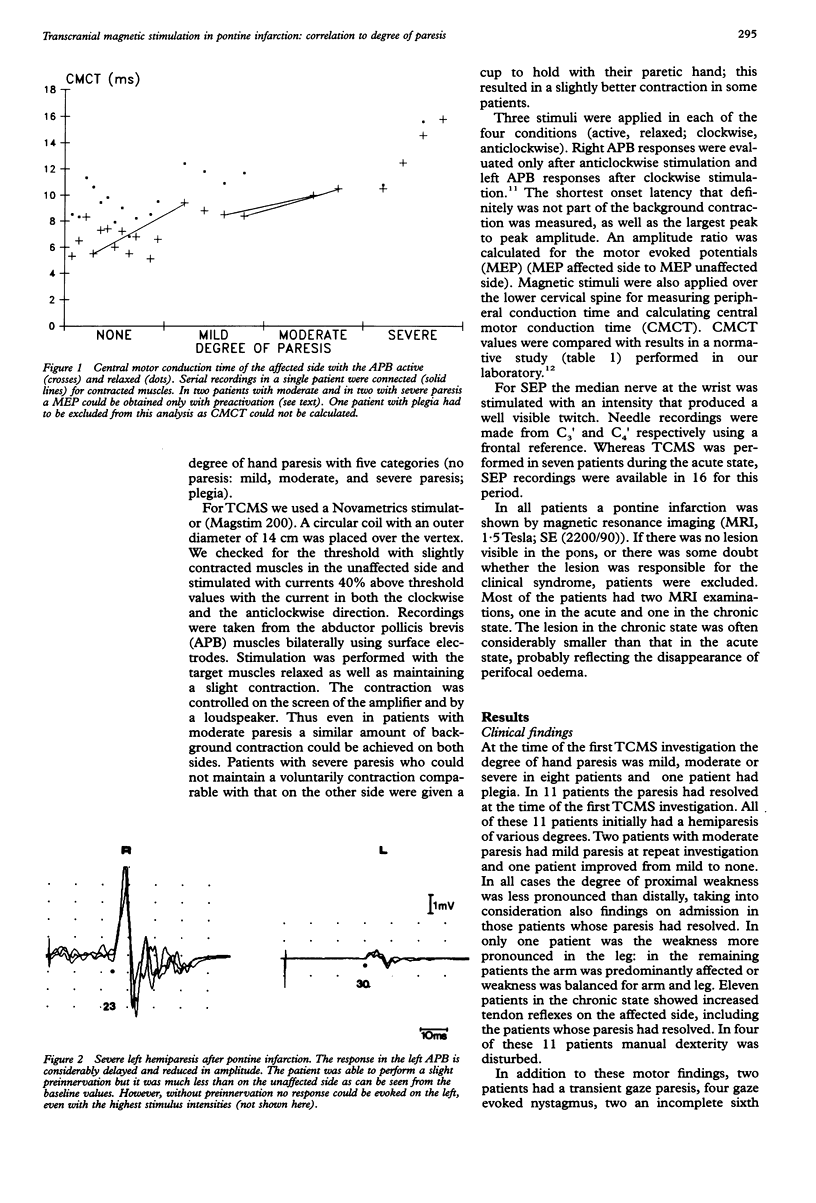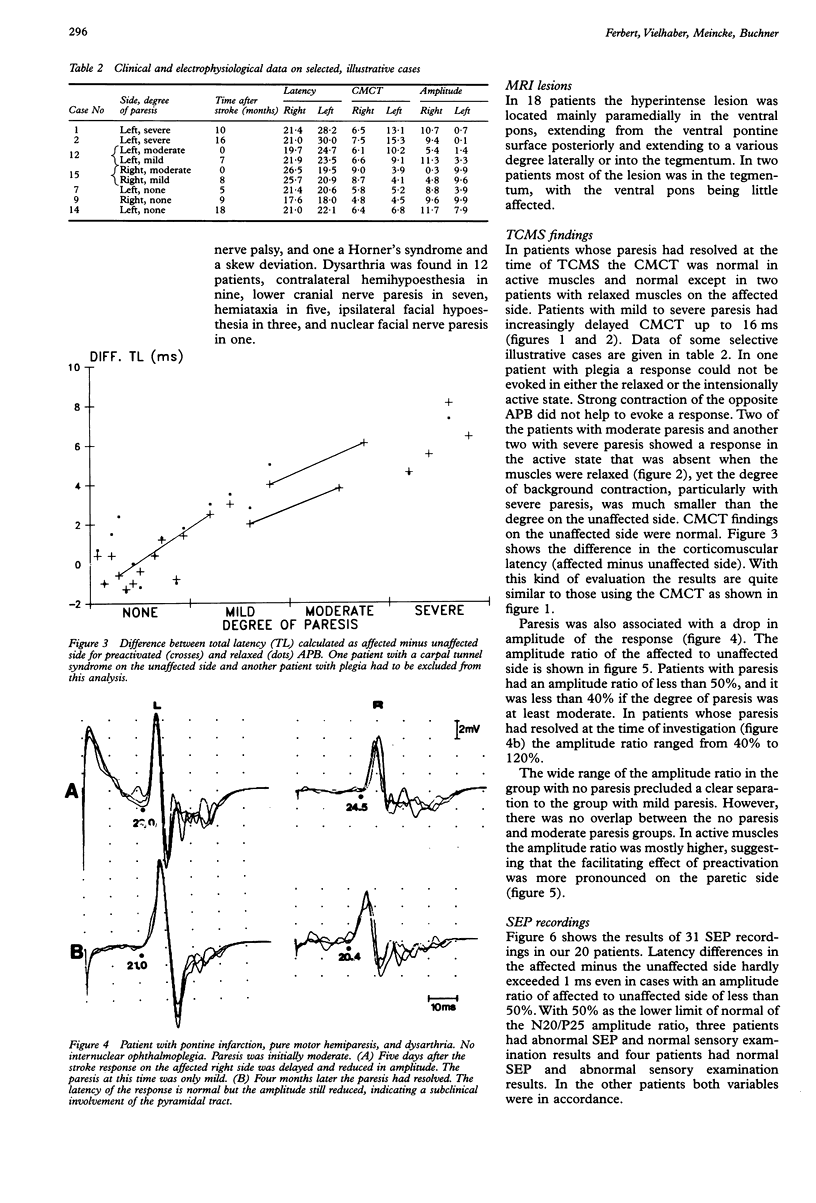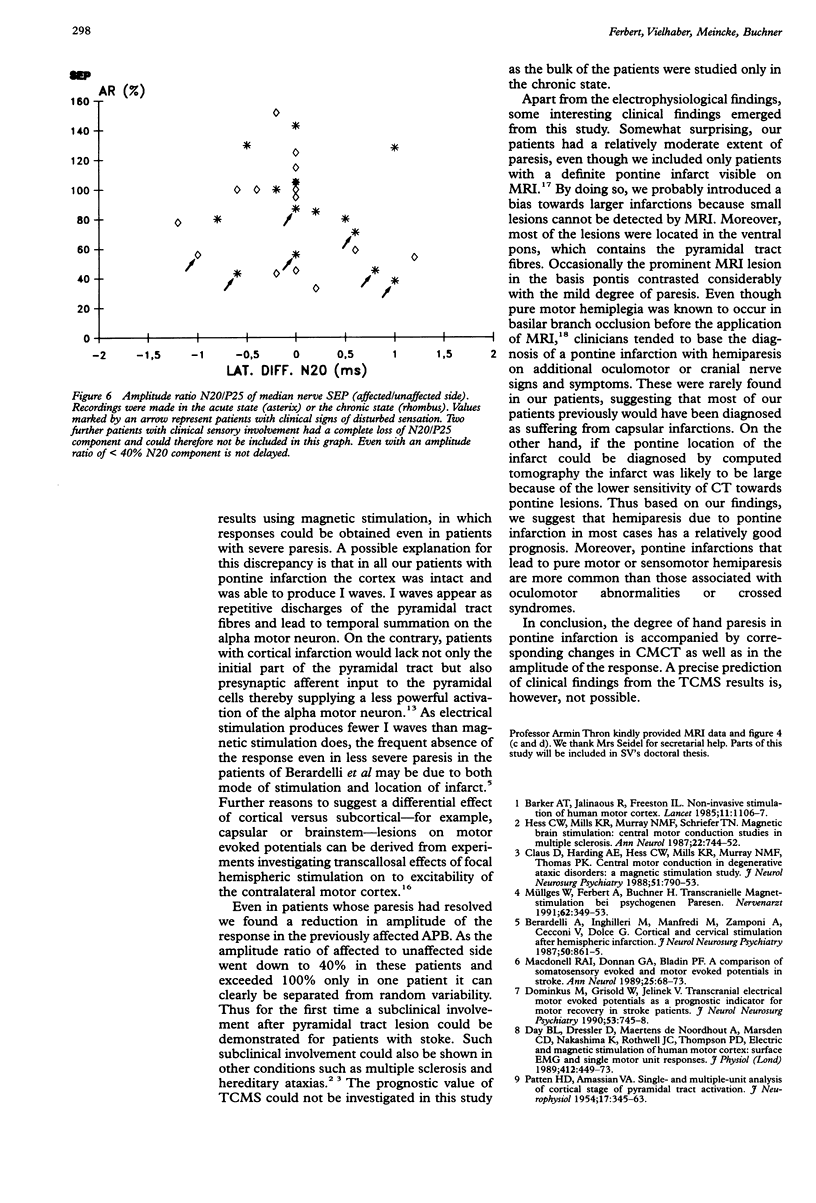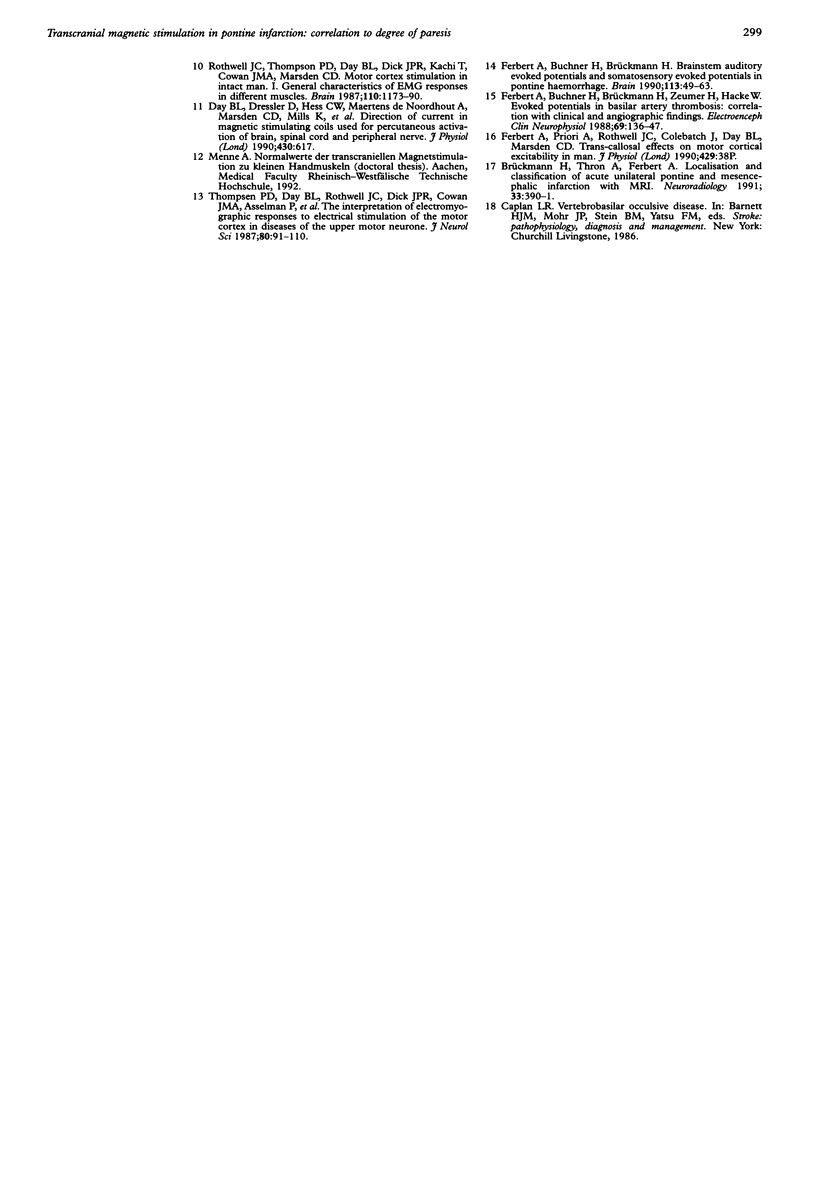Abstract
Transcranial magnetic stimulation was performed in 20 patients with pontine infarction who had initially some degree of hemiparesis. Only patients with a well defined lesion on magnetic resonance imaging that was appropriate for the neurological signs were included. Recordings were made from the abductor pollicis brevis muscle (APB) bilaterally. The degree of hand paresis was estimated clinically and related to the following parameters: central motor conduction time (CMCT), interside latency difference of total latency, and amplitude ratio of affected to unaffected side. Increasing degree of paresis was associated with increasing latency parameters and decreasing amplitude ratio. In the four patients with severe paresis a low amplitude response could be evoked and CMCT was delayed by up to 10 ms. When the paresis had resolved at the time of transcranial magnetic stimulation CMCT was normal. However, amplitude ratio was less than 100% in all but one patient, with most of the values ranging between 40% and 60%, which indicates a subclinical pyramidal tract lesion. Median nerve sensory evoked potentials (SEP) and related interside latency difference to amplitude ratio N20/P25 were also recorded. In contrast to TCMS, decreased amplitude ratio of SEP was not associated with delayed latency. Clinically, the mild degree of and good recovery from paresis in ventral pontine infarction was remarkable.
Full text
PDF





Images in this article
Selected References
These references are in PubMed. This may not be the complete list of references from this article.
- Beppu H., Nagaoka M., Tanaka R. Analysis of cerebellar motor disorders by visually-guided elbow tracking movement. 2. Contribution of the visual cues on slow ramp pursuit. Brain. 1987 Feb;110(Pt 1):1–18. doi: 10.1093/brain/110.1.1. [DOI] [PubMed] [Google Scholar]
- Claus D., Harding A. E., Hess C. W., Mills K. R., Murray N. M., Thomas P. K. Central motor conduction in degenerative ataxic disorders: a magnetic stimulation study. J Neurol Neurosurg Psychiatry. 1988 Jun;51(6):790–795. doi: 10.1136/jnnp.51.6.790. [DOI] [PMC free article] [PubMed] [Google Scholar]
- Dominkus M., Grisold W., Jelinek V. Transcranial electrical motor evoked potentials as a prognostic indicator for motor recovery in stroke patients. J Neurol Neurosurg Psychiatry. 1990 Sep;53(9):745–748. doi: 10.1136/jnnp.53.9.745. [DOI] [PMC free article] [PubMed] [Google Scholar]
- Ferbert A., Buchner H., Brückmann H. Brainstem auditory evoked potentials and somatosensory evoked potentials in pontine haemorrhage. Correlations with clinical and CT findings. Brain. 1990 Feb;113(Pt 1):49–63. doi: 10.1093/brain/113.1.49. [DOI] [PubMed] [Google Scholar]
- Ferbert A., Buchner H., Brückmann H., Zeumer H., Hacke W. Evoked potentials in basilar artery thrombosis: correlation with clinical and angiographic findings. Electroencephalogr Clin Neurophysiol. 1988 Feb;69(2):136–147. doi: 10.1016/0013-4694(88)90209-x. [DOI] [PubMed] [Google Scholar]
- Hess C. W., Mills K. R., Murray N. M., Schriefer T. N. Magnetic brain stimulation: central motor conduction studies in multiple sclerosis. Ann Neurol. 1987 Dec;22(6):744–752. doi: 10.1002/ana.410220611. [DOI] [PubMed] [Google Scholar]
- Macdonell R. A., Donnan G. A., Bladin P. F. A comparison of somatosensory evoked and motor evoked potentials in stroke. Ann Neurol. 1989 Jan;25(1):68–73. doi: 10.1002/ana.410250111. [DOI] [PubMed] [Google Scholar]
- PATTON H. D., AMASSIAN V. E. Single and multiple-unit analysis of cortical stage of pyramidal tract activation. J Neurophysiol. 1954 Jul;17(4):345–363. doi: 10.1152/jn.1954.17.4.345. [DOI] [PubMed] [Google Scholar]
- Thompson P. D., Day B. L., Rothwell J. C., Dick J. P., Cowan J. M., Asselman P., Griffin G. B., Sheehy M. P., Marsden C. D. The interpretation of electromyographic responses to electrical stimulation of the motor cortex in diseases of the upper motor neurone. J Neurol Sci. 1987 Aug;80(1):91–110. doi: 10.1016/0022-510x(87)90224-3. [DOI] [PubMed] [Google Scholar]



